|
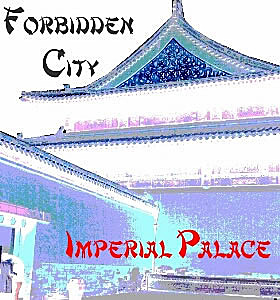 |
|
In
1421, after 17 years under construction, Yongle, a Ming emperor, became
the first to occupy the imperial palace and residence. 24 Ming and
Qing dynasty emperors followed him until 1911 when Puyi, China's last
emperor of the Qing Dynasty, addicated the throne on the founding
of the Chinese Republic. While it is known as the Imperial Palace
many know it as the Forbidden Palace. It earned the name because ordinary
people were barred from entering the grounds until 1911. The palace
occupies 170 acres and contains 8,706 rooms. It is estimated that
8 to 10 thousand people lived within the palace to service the needs
of the emperor. Eunuchs, up to 3 thousand of them, along with the
emperor's maids and concubines lived within its 160 foot moat and
behind its 30 foot high walls following the strict rules and rituals
of imperial life. Anyone who would like to see what the Imperial Palace
looks like should watch the movie "The Last Emperor." It
was filmed on location and shows in much detail much of the palace
grounds and its buildings. Of course the experience isn't the same
as visiting the palace in person, but it will give you a good idea
of what the palace is like. |
|
|
|
|
|
|
|
|
|
|
|
|
|
Passing
beneath Mao's portrait and through Tiananmen, the Gate of Heavenly
Peace, you enter a large courtyard heading toward the Imperial Palace.
Before you lies Wumen, Meridian Gate, rising 117 feet. Here you
purchase your tickets to enter the Imperial Palace.
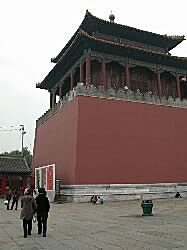
Wumen
The
first thing that strikes you about the palace is its immense size.
It occupies 170 acres and, while there are many buildings of various
sizes, contains areas of vast open space. Turning around and looking
at Wumen you can see the bridges crossing the Goldwater River.
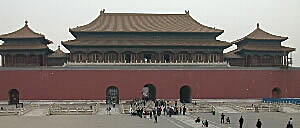
Wumen from within the palace grounds
|
 Wumen, Meridian Gate
Wumen, Meridian Gate |
|
|
|
|
|
|
|
|
Passing
through Wumen you have entered the Forbidden Palace and are facing
the Gate of Supreme Harmony.

Gate of Supreme Harmony
From
this point, rather than trying to provide a running commentary we'll
go to just pictures and captions. It's impossible for me to accurately
identify all of the buildings we saw, but I will caption those that
I know. Enjoy the pictures.
|
|
|
|
|
|
|
|
|
|
|
|
|
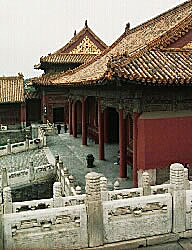 |
|
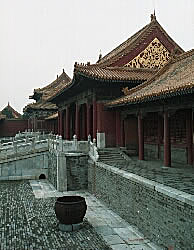 |
|
|
|
|
Ornate roof structures were fascinating as
were the intricate carvings on the corners of the roof
|
|
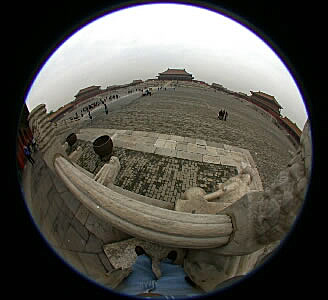
Vast courtyard with buildings on the perimeter
Continue
to the next page for more pictures of the Imperial Palace ...
|
|
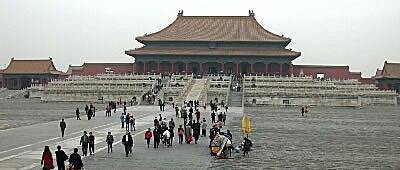
Taihe Dian, Hall of Supreme Harmony, inside
is the ornately carved and gold Dragon Throne (below)
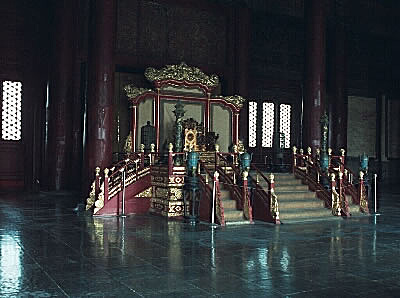
|
|
|
|
|
|
|
|
|
|
|
|
|
|
|

